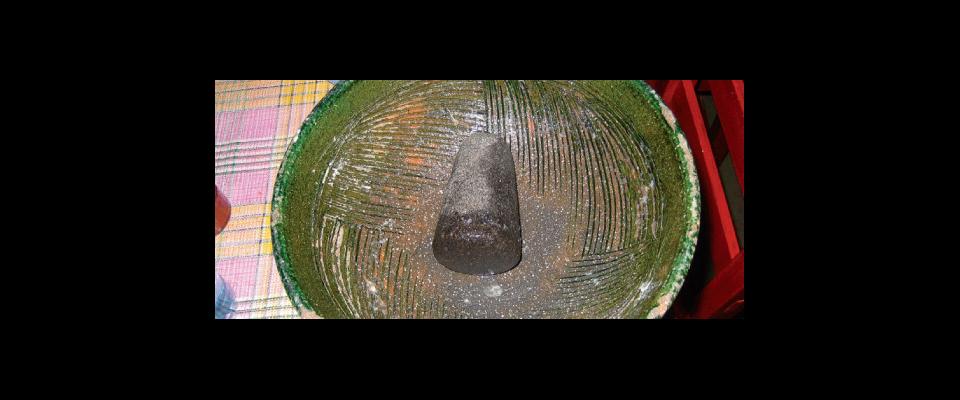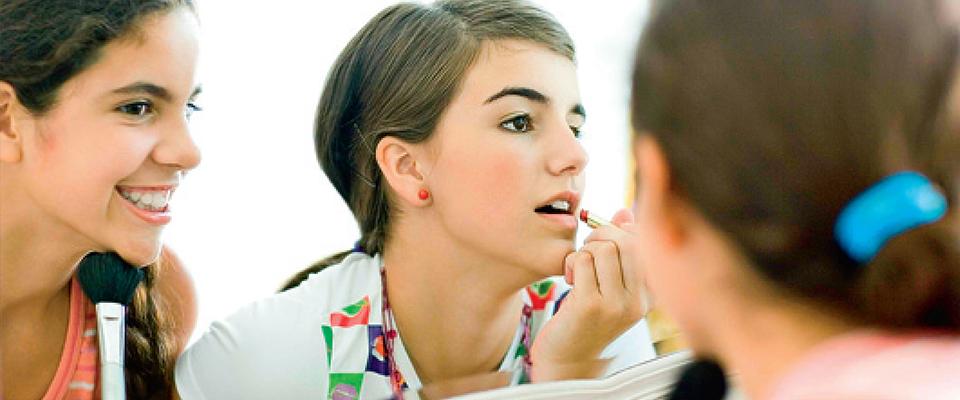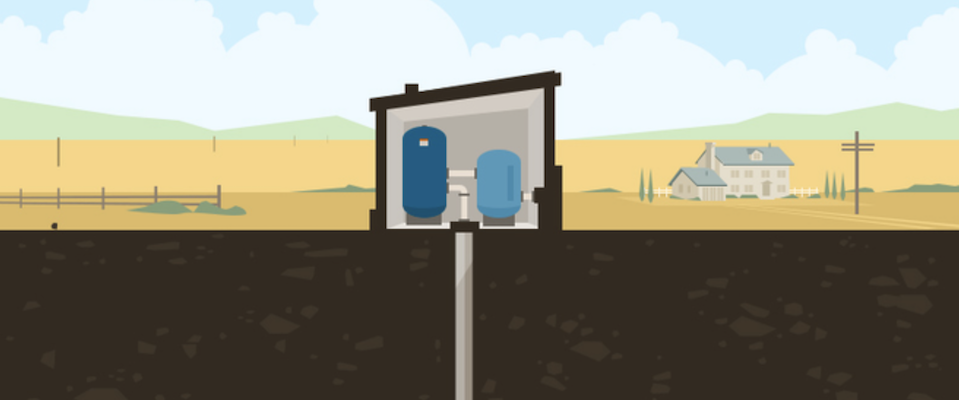Researchers track an outbreak of lead poisoning to a surprising source.
It started in 1994 with alarming levels of lead showing up in some Monterey County kids. Lead robs the body of iron and calcium—nutrients crucial to child development. The poisoning triggers progressive neurological damage, and as lead levels rise, a child’s IQ plummets.
Looking for the source, Celeste Hall, a public health nurse in the coastal town of Seaside, noticed that most of the affected kids’ families came from Oaxaca—part of a wave of migration to Monterey County that began in the 1970s. Some health officials started thinking that Mexican immigrants were arriving in California already contaminated with lead. But Hall and Seaside clinic physician Eric Sanford thought not, since many of the poisoned kids were born here, not in Mexico. They suspected the poison trail was less direct—and considerably more complicated. How right they were.
The threat was still a disturbing puzzle when UCSF epidemiologist Margaret Handley joined the hunt in 2000. Handley ’86, MPH ’90, Ph.D. ’00, had cut her teeth on problems like this. As an undergrad in environmental studies, she investigated state reports of chemical exposure, and later zeroed in on lead’s impact upon the reproductive health of battery plant workers.
She figured she knew what to do. With Hall and Sanford, Handley launched a full-out epidemiological study. Their research soon led the team to remote Oaxacan towns, to abandoned silver mines, and finally to a face-to-face showdown with a small crunchy grasshopper called a chapulín, hiding out in Oaxaca’s hot summer fields.
The research tossed out long-held biases and pinpointed some ways to protect families. But the trail remains sketchy, like a jungle path that keeps branching, leaving solutions tangled in tradition and in the politics of poverty.
In 2001, with support from the University of California Institute for Mexico and the United States, Handley’s team first analyzed records of lead levels in children and pregnant mothers in three Monterey County cities. Three times more Seaside children carried dangerous lead levels than kids living in nearby Salinas or Marina. Almost all those with high lead levels were Latino, although 70 percent were born in the United States. This finding punched holes in the unwelcome suggestion that contaminated immigrants were coming to California.
The team surveyed the Seaside women to find out what they knew about lead, whether their jobs or houses posed a hazard, what foods they cooked and how. One out of five pregnant women in Seaside showed elevated levels—the vast majority of them, women from Oaxaca. And a striking 60 percent of the women who had emigrated from the western Oaxacan region of Zimatlán showed unhealthy lead levels.
A pattern of spikes in lead levels suggested food or cooking styles as the culprit, rather than contamination from soil or peeling house paint, which would have shown a more constant level. Handley scrutinized cooking practices, since some Seaside families owned pottery from the Oaxacan artisan community of Santa Maria Atzompa, where ceramics crafted for generations are known to contain lead. The pottery—first made famous when Frida Kahlo bought a large table service of Atzompa ceramics—is prized for its vibrant green glaze. But the stand-out hue derives from lead, and cooking can leach out the poison.
When the Seaside women said they had used Oaxacan ceramics back home, Handley thought she had her answer. But they also said they did not use the same kind of pottery here in California, and rarely used pottery of any kind when they cooked. Oaxacans face considerable prejudice in Mexico, and often from other Mexican immigrants here, Handley says. She worried that the women might just be reluctant to talk about using traditional cooking methods.
But then came the clincher: The blood lead level in one California-born child, which had been normal in 2000, soared two years later. The boy’s mother provided Handley’s team with samples of food she had just received from her family in Oaxaca, including some chapulines, toasted with lime, garlic, and salt in the traditional Oaxacan style.
“She told us that her son had eaten quite a few chapulines in the previous few days,” Handley says. “We advised her to remove the food, and the California Department of Public Health issued a statewide alert, warning of potential contamination in chapulines. We had a prime suspect.”
The lead was coming from Mexico, but not inside poisoned people.
How could the occasional Oaxacan package account for widespread contamination? Inspiration comes unprompted, and one day in 2004 as Handley was sifting through her mail, she came across an article about Mexican mom-and-pop delivery businesses called envíos. Well under the radar but perfectly legal, envíos ship local foods and gifts from Mexicans up to their families in California.
The article described the envíos traffic from Oaxacan towns that had once been home to many Seaside residents. An entrepreneurial envío owner who calls himself Pancho Villa does a brisk business packaging and shipping homemade mole, chili peppers, and other treats from Oaxacan families, and often hand-delivering them to families in Seaside, Salinas, Santa Cruz, and nearby communities. “Envíos really help keep families and cultures intact,” says Handley, “but I started to wonder if they might be bringing a fair amount of lead-contaminated food from Oaxaca.”
Handley’s gang headed for the Oaxacan hill towns. The team now included Mexican chemists along with anthropologist Jim Grieshop, who had first made a study of Oaxacan envíos. The team aimed to sort out possible contamination from water, mining debris, and traditional cooking.
Celeste Hall’s husband, Emilio Aquino, is Oaxacan, and the couple served as liaisons. “I’m basically a big gringa coming into a small Oaxacan community,” Handley says. “Emilio and Celeste made this work.” (Truth be told, Handley is a slim woman with long brown hair, more likely to be taken more for a grad student than a grand inquisitor.)
Mexican geochemist Mario Villalobos, who performed postdoctoral research in 2002–03 at Berkeley, found abnormal lead levels in local mine residue, but the emerald green-glazed ceramics were really loaded. A type of pot known as a chilmolera is particularly prone to shedding lead from the glaze. These pots have serrated cooking surfaces that help grind up ingredients. The sharp edges pulverize limes used in preparing chapulines and other foods, releasing acids that accelerate leaching of lead from the glaze.
But that did not end the story. Grieshop introduced Handley to Ramona Perez, a remarkable San Diego State University anthropologist who has worked for 15 years with ceramicists in Atzompa. Her research and her friendships with the women potters revealed that the pots have traditionally been fired at very high temperatures, which stabilizes the lead in the glaze. However, large-scale timber operations have stripped native forests of copal, the dense, heavy-sapped wood traditionally used in kilns. Reforestation policies have inflated the price of this wood, and most ceramicists now fuel their kilns with cheaper scrap wood, which can’t fire up to the scorching temperatures needed to seal in the lead. Glaze makers, in response, have added still more lead to the glaze to compensate for the low firing temperature.
The burden is heavier still because the symptoms of lead poisoning mimic the effects of malnutrition, already endemic to parts of rural Oaxaca, say Handley and Perez. Local and state governments aren’t attacking malnutrition in these more remote areas, and the added toll of lead contamination can easily go unrecognized. A tragic picture emerges of a popular local craft raising local incomes and improving access to health services, while the people’s health gets worse. And as an unintended side effect, lead gets exported in food sent to families across Mexico and the United States.
Lead poisoning in Seaside, then, stems from traditions caught in a time of change, from environmental stress, and from poverty. But there is hope on both sides of the border. Though many Atzompa potters understandably deny the links between lead in their pots and disease in their communities, Perez is working with a cooperative of 27 families to develop Atzompa’s trademark emerald glassy-green glaze without lead. Though not yet a thriving alternative, barro sin plomo—ceramics without lead—is not a pipedream, either, Perez says.
Recently, Handley’s team began collaborating with a group of Mexican agricultural economists known as Centeotl, named for the Aztec god of corn. The group focuses on improving nutritional health in the most rural Oaxacan communities. Centeotl encourages local farmers to grow crops rich in the nutrients that lead strips away, including calcium- and iron-rich beans. Kitchen gardens, too, are starting to take on malnutrition. Chaya, also known as tree spinach, grows wild in Oaxaca and is still a popular food in parts of Mexico. Chaya is a richer source of iron than even spinach, and women now grow it in their gardens.
Closer to home, UC Cooperative Extension service experts highlight lead risks in Spanish-speaking communities through fotonovellas, colorful comic-book-like publications still popular in the towns. The stories, created with high school kids, depict school friends discussing the dangers of lead in food and pottery as well as from environmental sources. The fotonovellas are now distributed to schools, clinics, nutrition programs, and local health departments.
Handley also works with scholars at San Francisco State University who have developed lead-education lesson plans for ESL (English as a Second Language) literacy classes, tailored particularly for Spanish-speaking mothers of young children.
Getting the word out is a good way to get the lead out, Handley says, but it’s not the best way. “We’ve come so far in understanding how to prevent lead poisoning,” Handley says. “It’s really sad that the momentum is not yet there to make lasting progress. The solution should come from actions like banning lead in all glazes or paint. This is why lead poisoning in the U.S. is declining in most places—because of policy.
“But we can’t turn our backs on the problem, waiting for policy change. So we focus now on education, too—in California and in Mexico—working with the community.”
A new tool Handley calls “the zapper” can provide near-instant readings of lead levels, and she is urging public health systems to start using the device and making it available to communities.
Back in Seaside, envío owner Pancho Villa has taken eagerly to the idea of allowing lead-level tests of goods from Oaxaca, so he can ship lead-free ceramics whenever they are available.
“Our research started locally and then became bi-national,” Handley says. “As we went deeper into the problem, we found our efforts merged with colleagues who come at these problems with different sets of expertise. Some of them, it feels, we just bumped into.
“The problems are bi-national, and the solutions will have to be. It takes all of us. There’s probably no endpoint. It’s a process, and it’s fascinating. I hope we can help people protect their families—and their food traditions on both sides of the border.”





















